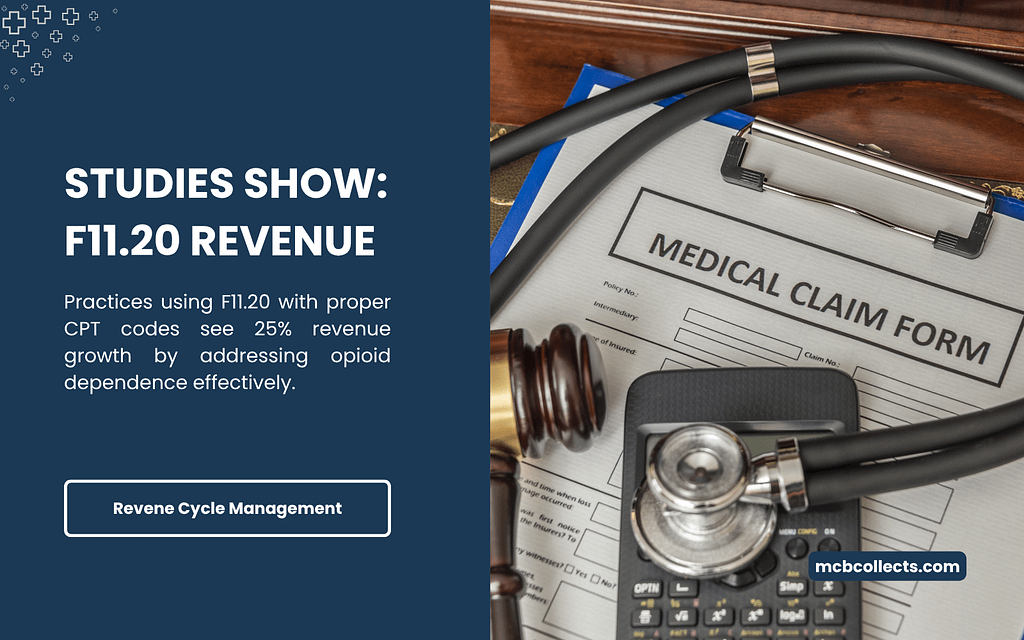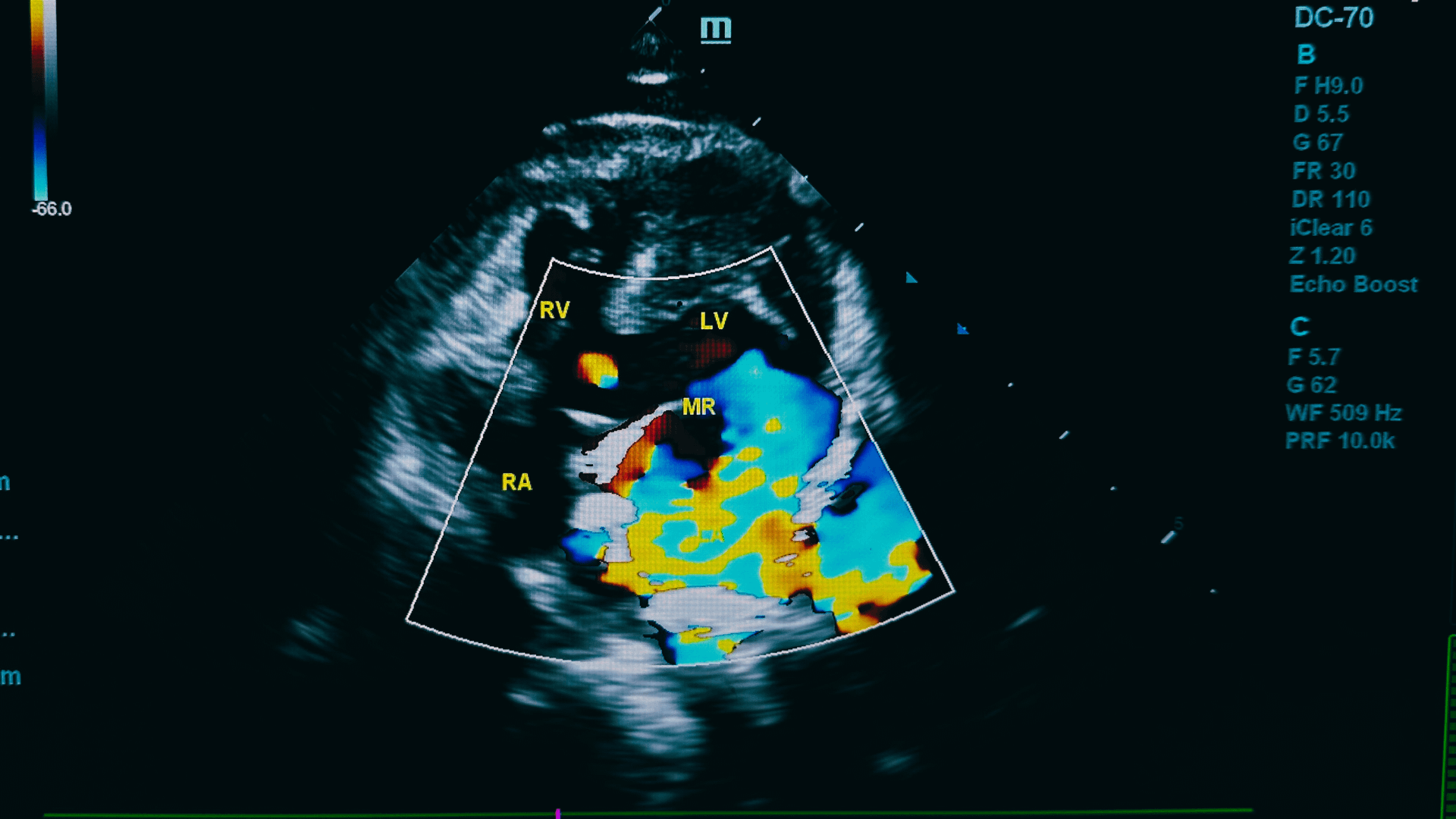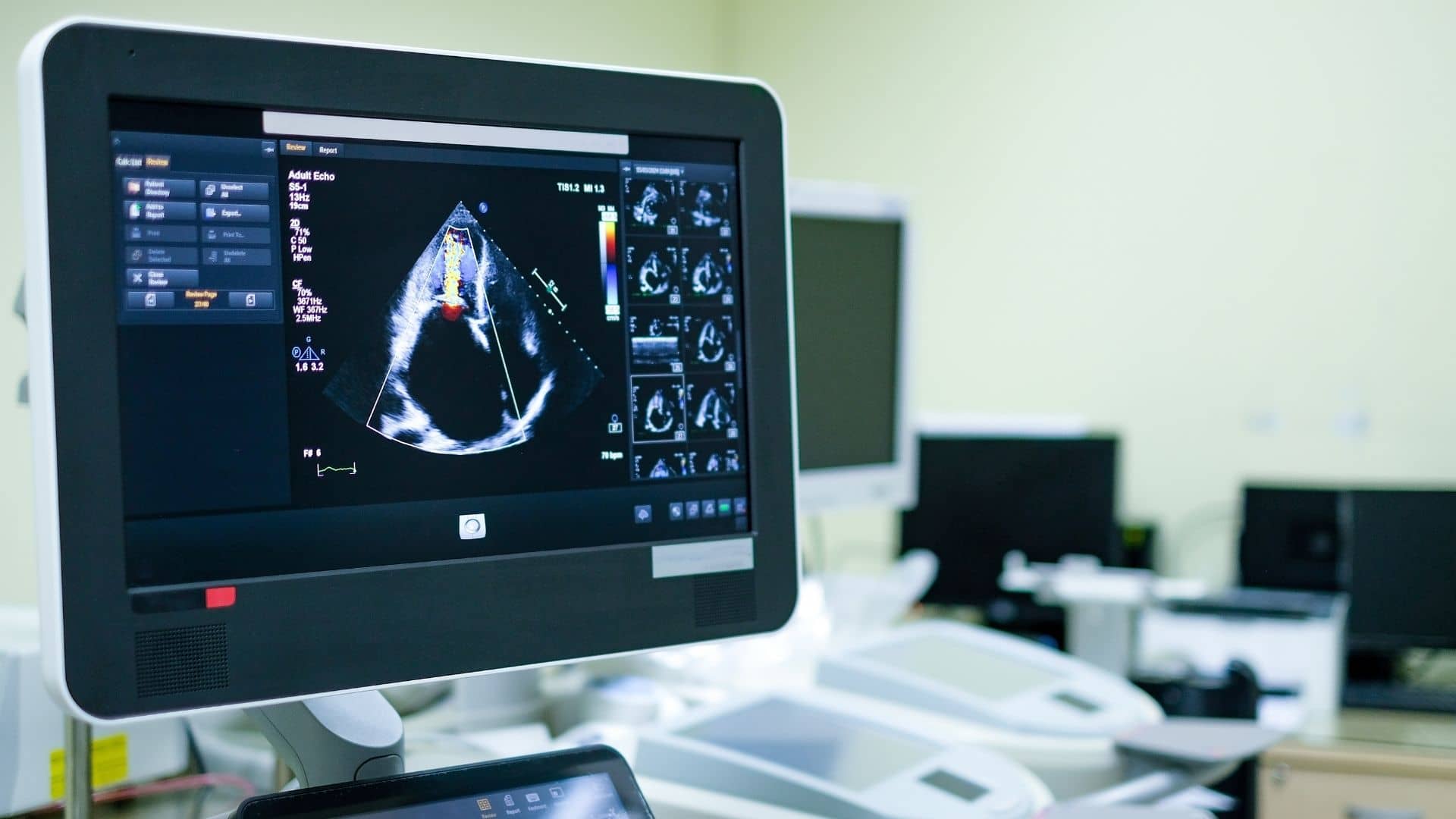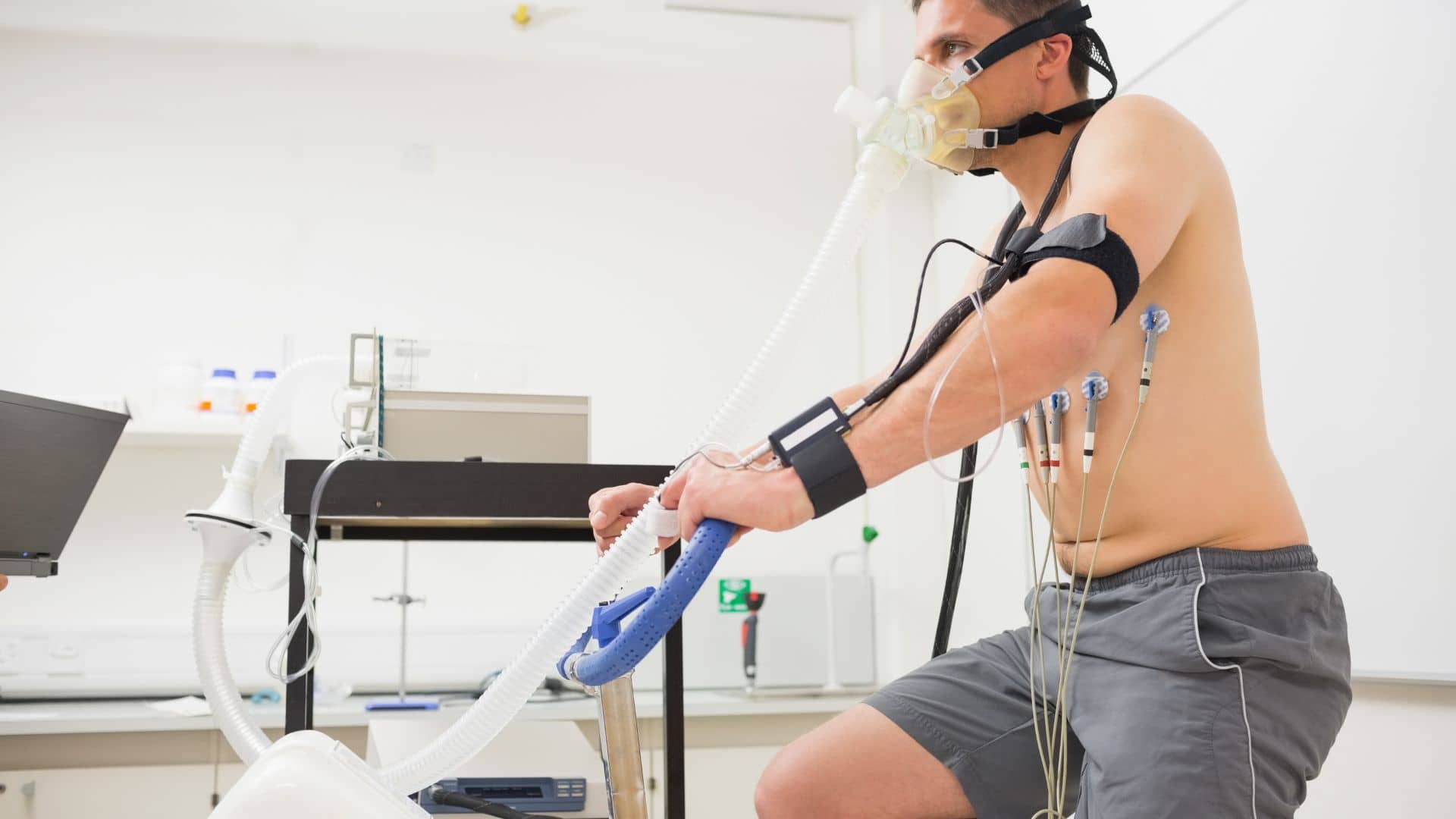Article Summary
This guide breaks down the f11.20 ICD-10 code, what it means for your practice, and how to bill it right. We’ll cover:
- What f11.20 actually means and when to use it
- Real documentation that keeps auditors happy
- Which CPT codes work with f11.20 for better payments
- Mistakes that cost practices money
- Other codes you might need instead
- Practical tips from billing experts
What is F11.20 ICD-10 Code?
F11.20 stands for “Opioid dependence, uncomplicated” in the ICD-10 system. Think of it as the straightforward version – your patient has opioid dependence but no extra complications like withdrawal symptoms happening right now or other messy situations.
This code sits in the mental health section of ICD-10, specifically under substance problems. You’ll use f11.20 when someone clearly depends on opioids but doesn’t have the bells and whistles of intoxication, withdrawal, or other drug-related issues at the same time.
| What F11.20 Covers | What It Doesn’t Cover |
| Basic opioid dependence | Active withdrawal symptoms |
| Stable dependence patterns | Current intoxication |
| No acute complications | Multiple substance problems |
| Chronic opioid use disorder | Remission status |
The “uncomplicated” part is key here. If your patient walks in sweating and shaking from withdrawal, that’s not f11.20 anymore – you’d need a different code.

When Your Patient Actually Has F11.20
Here’s the real deal on diagnosing f11.20. Your patient needs to show at least two of these problems in the past year:
| Problem Area | What You’ll Actually See |
| Tolerance | “My usual pills don’t work anymore, I need more” |
| Withdrawal | Gets sick when pills run out early |
| Loss of Control | “I only meant to take one but took the whole bottle” |
| Failed Quit Attempts | “I’ve tried to stop so many times” |
| Time Consumed | Spends most days thinking about or getting pills |
| Life Problems | Lost job, family issues, stopped hobbies |
| Continued Use | “I know it’s killing me but I can’t stop” |
The tricky part? You need solid documentation of at least two of these within 12 months. Vague notes like “patient seems dependent” won’t cut it during an audit.
Here’s what good documentation looks like: “Patient reports needing 3x original prescription dose for pain relief (tolerance). States last attempt to quit was 6 months ago, lasted 2 days before resuming use (unsuccessful cessation attempts).”
Billing F11.20 the Right Way
F11.20 doesn’t pay bills by itself. You need to pair it with actual procedure codes. Here’s what works:
| What You Did | CPT Code | What Insurance Sees |
| First evaluation | 90791 | New patient assessment |
| 45-minute therapy | 90837 | Individual psychotherapy |
| 30-minute therapy | 90834 | Shorter individual session |
| Group therapy | 90853 | Group treatment |
| Family session | 90847 | Family therapy |
Pro tip: Most insurers pay well for f11.20 cases because addiction treatment saves them money long-term. But watch out for session limits – many plans cap outpatient visits at 20-26 per year.
Some insurers require prior auth for ongoing therapy. Call them before you hit visit 5 or 6 to avoid denials.
Common F11.20 Coding Mistakes That Cost Money
Every billing department makes these errors. Here’s how to avoid them:
| Mistake | Why It’s Wrong | How to Fix It |
| Using F11.9 instead | Too vague, leads to lower payment | Be specific by using F11.20 |
| Missing the .20 | Incomplete code results in denial | Always use the full 5-character code |
| Wrong severity level | Doesn’t match the documented treatment | Match the code to the patient’s actual symptoms |
| No supporting documentation | Auditors may reject insufficient notes | Write detailed symptom descriptions |
| Mixing up substance codes | F11.20 and F12.20 confusion | F11 = opioids, F12 = cannabis – don’t mix them |
Real example from our billing department: A practice lost $15,000 in denied claims because they kept using F11.9 (unspecified opioid disorder) instead of F11.20. The insurance company paid 40% less for the vague code.
Related Codes You Might Need Instead
F11.20 has cousins. Pick the wrong one and your claim gets denied:
| Code | What It Means | When to Use It |
| F11.21 | Opioid dependence, in remission | Patient is clean but still undergoing treatment |
| F11.22 | Opioid dependence with intoxication | Patient is currently intoxicated |
| F11.23 | Opioid dependence with withdrawal | Patient is experiencing active withdrawal |
| F11.29 | Opioid dependence, other complications | Patient has multiple or unspecified complications |
| F12.20 | Cannabis dependence, uncomplicated | Use only for cannabis cases — not for opioids |
Quick decision tree: Is your patient actively withdrawing? Use F11.23. Are they high during the visit? Use F11.22. Clean for months but still in therapy? Use F11.21. Basic dependence with no drama? That’s your F11.20.
F11.20 and Other Mental Health Problems
Most f11.20 patients don’t just have opioid problems. They often carry other mental health diagnoses too.
Common combinations we see:
- F11.20 + F32.1 (major depression, moderate)
- F11.20 + F41.1 (generalized anxiety disorder)
- F11.20 + F43.10 (PTSD, unspecified)
You can bill multiple diagnosis codes on the same claim. In fact, you should – it shows medical necessity for more intensive treatment and often gets you approved for more sessions.
Documentation That Survives Audits
Auditors love to pick on substance abuse claims. Here’s what protects you:
| Document This | Example Note |
| Specific symptoms | “Patient reports taking 8 pills daily, up from 2 pills 6 months ago” |
| Functional impairment | “Missed 15 days of work last month due to drug-seeking behavior” |
| Treatment response | “Patient completed week 3 of therapy, reports 2 days without use” |
| Safety concerns | “Discussed overdose risk, patient has naloxone at home” |
| Family impact | “Spouse threatening divorce due to patient’s drug use” |
Weak documentation kills claims. Don’t write “patient has opioid dependence.” Write “patient meets criteria for opioid dependence per DSM-5: tolerance (needs 6x original dose), unsuccessful quit attempts (5 times in past year), continued use despite job loss.”
Working with Different Insurance Plans
Not all insurers treat f11.20 the same way:
| Insurance Type | What to Expect | Special Notes |
| Medicare | Covers most services | May require progress notes every 30 days |
| Medicaid | Good coverage, varies by state | Some states offer enhanced addiction treatment benefits |
| Commercial Plans | Usually covered well | Check for session limits and prior authorization |
| Worker’s Comp | Tricky – depends on work-related injury | Often requires an Independent Medical Exam (IME) approval |
State Medicaid programs often have the best addiction coverage. Some cover intensive outpatient programs and even residential treatment with minimal hassle.
Technology Tips for F11.20 Coding
Your EHR system can make f11.20 coding easier or harder:
| EHR Feature | How It Helps |
| Smart templates | Pre-fills diagnostic criteria |
| Code lookup | Prevents F11.20 vs F12.20 mixups |
| Claim scrubbing | Catches missing modifiers before submission |
| Outcome tracking | Shows treatment progress for reauthorization |
Most modern EHRs have addiction treatment templates. Use them – they prompt you to document the right criteria and often include validated screening tools.
If your practice sees a lot of addiction cases, consider specialty mental health EHRs. They’re built for this type of documentation and billing.
MCB works with practices stuck with older EHR systems that don’t handle mental health coding well. Our revenue cycle management services include EHR optimization specifically for behavioral health billing.

Telehealth and F11.20
COVID changed everything for addiction treatment. Telehealth is now standard for f11.20 patients:
| Telehealth Code | Use With F11.20 For |
| 98966 | 5-10 minute phone check-in |
| 98967 | 11-20 minute phone consultation |
| 98968 | 21+ minute phone session |
| G2012 | Virtual check-in |
Most insurers now pay the same rate for telehealth addiction services as in-person visits. This opened up treatment for patients who couldn’t make it to the office regularly.
Quality Measures and F11.20
Insurance companies track quality measures for addiction treatment. They look at:
| Quality Measure | What They Want to See |
| Engagement | Patient shows up for appointments |
| Retention | Stays in treatment for 90+ days |
| Abstinence | Negative drug tests |
| Functional improvement | Back to work, stable housing |
Good documentation of these measures can lead to bonus payments from some insurers. It also helps with reauthorization for continued treatment.
Avoiding Denials with F11.20
Common denial reasons and fixes:
| Denial Reason | Quick Fix |
| “Medical necessity not established” | Add functional impairment details |
| “Services not covered” | Check if prior auth was needed |
| “Diagnosis doesn’t support service level” | Match intensity to documented severity |
| “Duplicate services” | Don’t bill individual and group therapy same day |
Appeal denial rates for f11.20 are actually pretty good if your documentation is solid. Insurance companies know addiction treatment works and saves money.
F11.20 Success Stories from Our Clients
Real examples from practices we work with:
Case 1: Small family practice started screening for opioid dependence during routine visits. They identified 23 patients who needed f11.20 codes. Revenue from mental health CPT codes jumped 35% in six months.
Case 2: Pain management clinic was losing patients to addiction. They added addiction counseling services using f11.20 and therapy codes. Now they keep patients in treatment instead of losing them to street drugs.
Case 3: Internal medicine practice partnered with a therapist to provide collaborative care. They use f11.20 for medical management while the therapist handles psychotherapy. Both providers bill insurance and split revenue.
Special Populations and F11.20
Some patient groups need extra attention:
| Population | Special Considerations |
| Pregnant women | Many insurers have enhanced benefits |
| Veterans | VA has specific addiction treatment pathways |
| Adolescents | May need parent consent for treatment |
| Elderly | Often have multiple medical conditions |
Pregnant women with f11.20 often qualify for intensive case management services that pay well. Don’t miss this opportunity for additional revenue.
Compliance and F11.20
Substance abuse records have extra privacy protections under 42 CFR Part 2. This affects:
- How you share information with other providers
- What goes in standard medical records
- How you handle subpoenas and court orders
- Insurance company access to treatment notes
Many practices don’t realize that addiction treatment records need special handling. MCB’s HIPAA compliance services include 42 CFR Part 2 training and policy development.
Future of F11.20 Coding
ICD-11 is coming eventually, but ICD-10 isn’t going anywhere soon. Changes we’re watching:
- More granular severity coding options
- Integration with social determinants of health
- Outcome-based payment models
- Artificial intelligence in coding assistance
For now, master f11.20 in ICD-10. The concepts will transfer to whatever comes next.
Key Takeaways
F11.20 represents straightforward opioid dependence without complications. Your success with this code depends on:
- Solid documentation of specific diagnostic criteria
- Pairing with appropriate procedure codes
- Understanding insurance requirements and limitations
- Avoiding common coding mistakes
- Staying compliant with special privacy rules
The opioid crisis means more patients need these services. Practices that can document and bill f11.20 correctly have a real opportunity to help patients while growing revenue.
Don’t try to figure this out alone. Addiction billing has too many pitfalls and opportunities to learn by trial and error. Partner with experts who know the landscape.
Our team at MCB has helped hundreds of practices optimize their behavioral health billing. We know which insurers pay best for f11.20 services, how to document for maximum reimbursement, and how to avoid the compliance traps that catch inexperienced billers.
MCB’s specialized mental health billing services take the guesswork out of f11.20 coding while you focus on patient care.
Frequently Asked Questions About F11.20
Q: Can I use f11.20 for patients who also use other drugs? A: You need separate codes for each substance. F11.20 only covers opioids. If your patient also drinks too much or uses cocaine, those problems get their own codes. Don’t try to squeeze everything into f11.20.
Q: What’s the difference between f11.20 and f11.21? A: F11.20 is active dependence. F11.21 is for patients in remission – they’re clean but still need support to stay that way. Use F11.21 when someone’s been sober for months but still comes for therapy or support groups.
Q: Do I need prior authorization for f11.20 patients? A: Depends on the plan. Most cover the first few visits without prior auth, then want approval for ongoing treatment. Call the insurance company around visit 5 or 6 to check their rules.
Q: Can I bill f11.20 with medical procedures? A: Absolutely. If your patient needs an EKG because of drug-related heart problems, bill the cardiology work alongside f11.20. Just make sure both diagnoses are medically necessary and documented.
Q: How often should I see f11.20 patients? A: Start with weekly visits, then spread them out as the patient stabilizes. Most insurance plans expect to see progress notes at least monthly for ongoing authorization.
Q: What if an auditor questions my f11.20 coding? A: Good notes protect you. Show them exactly which criteria the patient met and when. Specific examples beat vague descriptions every time.
Q: Can telehealth visits use f11.20? A: Yes, telehealth works great for addiction counseling. Use the regular therapy codes (90834, 90837) with f11.20 for video sessions. Most insurers pay the same rate as in-person visits now.
Q: Should I code f11.20 for patients on prescribed pain medication? A: Only if they actually meet dependence criteria. Taking prescribed opioids as directed isn’t dependence. Look for the behavioral problems – can’t control use, life falling apart, failed quit attempts.Q: What documentation do I need for f11.20 billing? A: Document which specific criteria they meet, how long it’s been going on, what you’re doing about it, and how their dependence affects daily life. Skip the generic templates and write real clinical observations.











